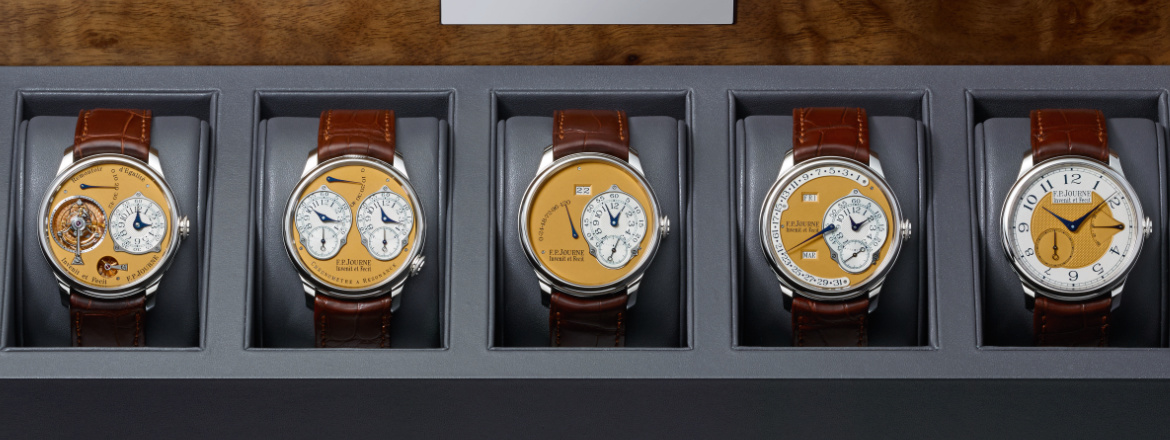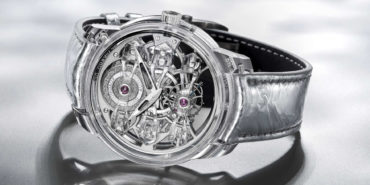Collector’s Guides • 19 Dec 2016
The Artists Of Time: Understanding The Desirability Of Independent Watchmakers
2016 has certainly been an interesting year for the world of watchmaking. While the industry is facing a decline in demand and overall momentum, the like of which it hasn’t seen in quite a few years, one sub-culture is not only doing well, but in fact thriving: independent watchmakers.
Let’s look at some of the factors that contribute to the ever-growing interest for such watchmakers and their works:
Exclusivity:
During the recent November watch auctions in Hong Kong, both Christie’s and Phillips offered Philippe Dufour Simplicity watches, all hammering for above the estimate. While this might not be surprising given the rarity of these watches (around 200 were made in over a decade since their introduction), what is astonishing is their current market value compared to their original prices, over five times to be precise.
Is that simply a case of supply and demand, especially as Philippe Dufour’s name has become synonymous with the ultimate in traditional hand-finishing? Or is it recognition for the potentially lasting value of what independent watchmakers have to offer?
Either way, there’s a certain satisfaction in knowing that you’ve bought something that you will probably never see on anyone else’s wrist. If one chooses to define the notion of luxury as exclusivity above all else (and not just restriction by price), then it doesn’t get much more exclusive than the works of a true independent watchmaker like of Philippe Dufour.

Philippe Dufour Grande Sonnerie
Preserving Traditional Crafts:
Whether it’s new materials, imaginative takes on complications, evolutions in production methods or totally novel and radical designs, one criticism of the watch industry as whole is that it is losing sight of the fundamental artisanal crafts that make watchmaking an art form rather than a platform for anecdotal innovation. Thankfully, certain independent watchmakers are keeping the art alive.
Roger W. Smith for instance practices a much more ancestral from of watchmaking, creating just about every component of his watches by traditional methods in his workshop on the Isle of Man. It sounds simple enough, though such an approach has become almost extinct.

Roger Smith at work
The same could be said for Kari Voutilainen, whose mastery of traditional techniques and movement decoration incorporated into his own proprietary movements not only rivals that of the very best from the annals of watchmaking, but sets a new standard altogether.

Voutilainen GMR
Tastefully Executed Innovation:
One need look no further than the watches of F.P.Journe to witness what true innovation looks like in a mechanical watch; the same way it would’ve been done centuries ago. Almost every F.P.Journe timepiece released has brought forth one or more exceptional feats in micro-mechanics, though never once straying from the traditional codes of watchmaking.
Laurent Ferrier is another independent watchmaker that produces lavishly finished timepieces incorporating several impressive yet ultimately subtle innovations, executed in a timelessly appealing manner.

Laurent Ferrier Galet Micro Rotor
The Soul Factor:
The final and perhaps most significant aspect of buying watches from independent watchmakers is one that may not be immediately apparent or tangible in a watch, but is one that inevitably speaks to watch collectors. It’s what I like to call “the soul factor”. If you regard a mechanical watch as a piece of art, then the human element should be at the core of every watch purchasing decision.
It’s about getting to know the artist behind the object and their story behind its creation. It’s something that a mass-produced object simply cannot convey, and to me at least, that’s what ultimately makes independent watchmaking almost a world of its own within the vast universe of horology.
For more information, please schedule an appointment with our Sales Consultant here.











